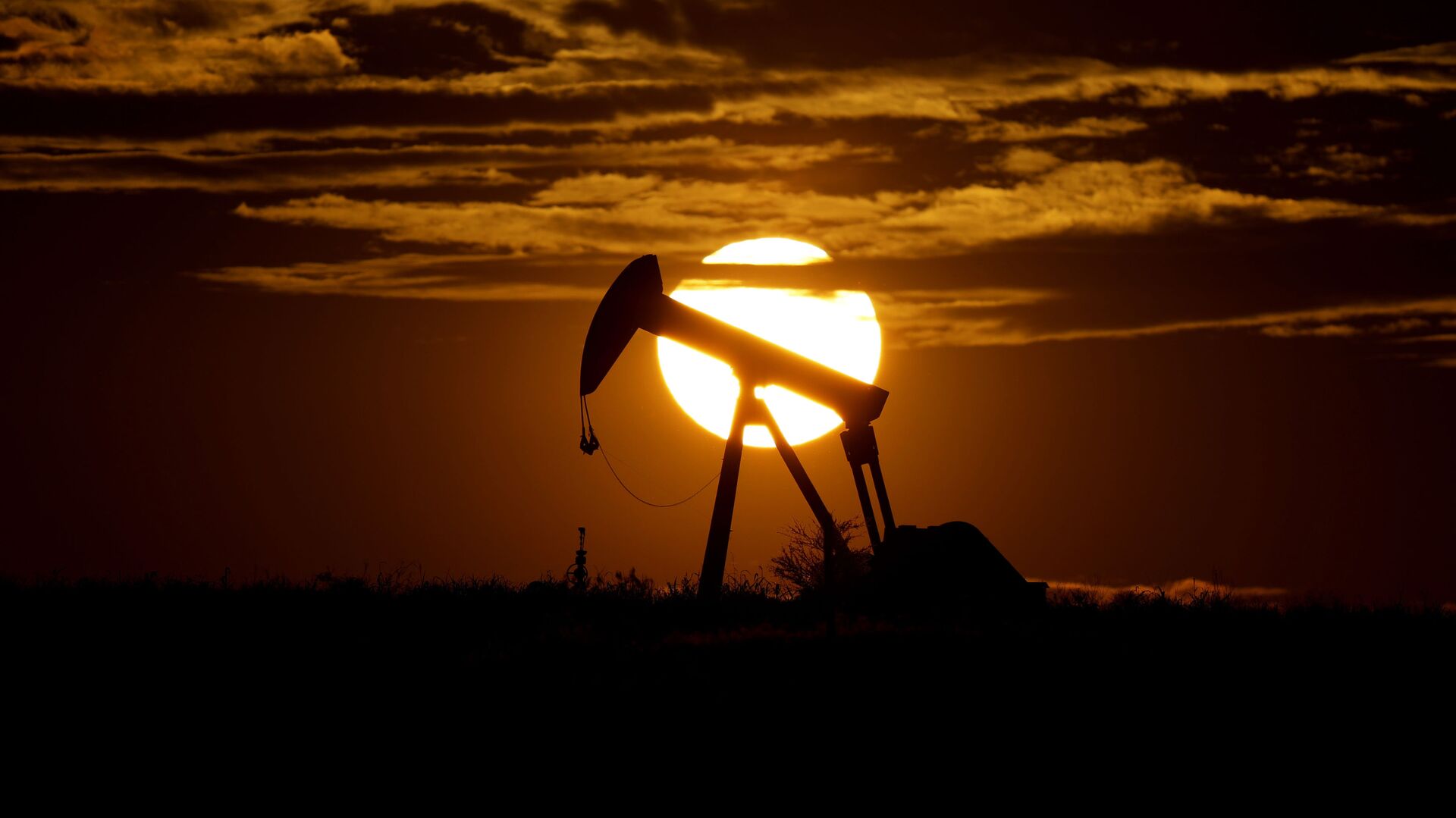https://sputnikglobe.com/20211004/oil-prices-hit-seven-year-high-in-us-sparking-economic-unease--1089665830.html
Oil Prices Hit Seven-Year High in US Sparking Economic Unease
Oil Prices Hit Seven-Year High in US Sparking Economic Unease
Sputnik International
Oil prices in the United States have hit a seven-year high as a confluence of factors has seen the cost of a single barrel of crude oil go from $20.10 in April... 04.10.2021, Sputnik International
2021-10-04T22:16+0000
2021-10-04T22:16+0000
2021-10-04T22:15+0000
america
oil prices
opec
oil
https://cdn1.img.sputnikglobe.com/img/07e5/03/04/1082257498_0:54:3446:1992_1920x0_80_0_0_059838c27c1a65bfb3b0992164c14e14.jpg
The fallout from Hurricane Ida and a lack of truck and port workers, combined with a surge in demand as the US economy recovers from the coronavirus pandemic, has sent oil prices to their highest since November of 2014. With production lagging and demand soaring, the laws of supply and demand have sent the price of oil through the roof.The Organization of the Petroleum Exporting Countries (OPEC) is set to meet Monday, but they’re unlikely to raise production levels. Following the disruption of oil production caused by Hurricane Ida, the US was expected to produce 713,000 fewer barrels a day throughout the month of September. President Joe Biden negotiated with OPEC in its wake, but was only able to secure a 400,000 a day increase in production.OPEC is wary of increasing production at the moment due to the uncertainty, particularly in the US, over the COVID-19 pandemic. When the pandemic was at its height, demand for oil plummeted and caused the price of oil to drop, bottoming out at $20.10 a barrel in April of 2020. With no guarantee that demand will hold steady, OPEC doesn’t want to increase production only for the rug to be pulled from underneath them again.Supply chain issues have also caused problems. Without sufficient truck and port workers, oil shipments haven’t been made on time. This not only affects a wide range of commodities, but it makes rebuilding or expanding necessary oil production infrastructure more costly and difficult.The rising price of oil has economists worried about what the surge in oil prices could mean for the global economy. Continued growth could result in widespread inflation, as well as “demand destruction,” where consumers stop buying a product due to it being too expensive or hard to find.While the price of oil has risen rapidly, it is nowhere near its historical highs. In fact, it wasn’t all that long ago that the price of a barrel had a sustained run over $100. From December of 2009 to August of 2014, the price of oil was at or above $100 a barrel. Oil prices dropped rapidly at the end of 2014 and have remained in the $50 to $80 per barrel range outside of the massive drop in the wake of the pandemic.
Sputnik International
feedback@sputniknews.com
+74956456601
MIA „Rossiya Segodnya“
2021
News
en_EN
Sputnik International
feedback@sputniknews.com
+74956456601
MIA „Rossiya Segodnya“
Sputnik International
feedback@sputniknews.com
+74956456601
MIA „Rossiya Segodnya“
america, oil prices, opec, oil
america, oil prices, opec, oil
Oil Prices Hit Seven-Year High in US Sparking Economic Unease
Oil prices in the United States have hit a seven-year high as a confluence of factors has seen the cost of a single barrel of crude oil go from $20.10 in April of 2020 to $78.03 as of Monday.
The fallout from Hurricane Ida and a lack of truck and port workers, combined with a surge in demand as the US economy recovers from the coronavirus pandemic, has sent oil prices to their highest since November of 2014. With production lagging and demand soaring, the laws of supply and demand have sent the price of oil through the roof.
The Organization of the Petroleum Exporting Countries (OPEC) is set to meet Monday, but they’re unlikely to raise production levels. Following the disruption of oil production caused by Hurricane Ida, the US was expected to produce 713,000 fewer barrels a day throughout the month of September. President Joe Biden negotiated with OPEC in its wake, but was only able to secure a 400,000 a day increase in production. OPEC is wary of increasing production at the moment due to the uncertainty, particularly in the US, over the COVID-19 pandemic. When the pandemic was at its height, demand for oil plummeted and caused the price of oil to drop, bottoming out at $20.10 a barrel in April of 2020. With no guarantee that demand will hold steady, OPEC doesn’t want to increase production only for the rug to be pulled from underneath them again.
Supply chain issues have also caused problems. Without sufficient truck and port workers, oil shipments haven’t been made on time. This not only affects a wide range of commodities, but it makes rebuilding or expanding necessary oil production infrastructure more costly and difficult.
The rising price of oil has economists worried about what the surge in oil prices could mean for the global economy. Continued growth could result in widespread inflation, as well as “demand destruction,” where consumers stop buying a product due to it being too expensive or hard to find.
While the price of oil has risen rapidly,
it is nowhere near its historical highs. In fact, it wasn’t all that long ago that the price of a barrel had a sustained run over $100. From December of 2009 to August of 2014, the price of oil was at or above $100 a barrel. Oil prices dropped rapidly at the end of 2014 and have remained in the $50 to $80 per barrel range outside of the massive drop in the wake of the pandemic.

